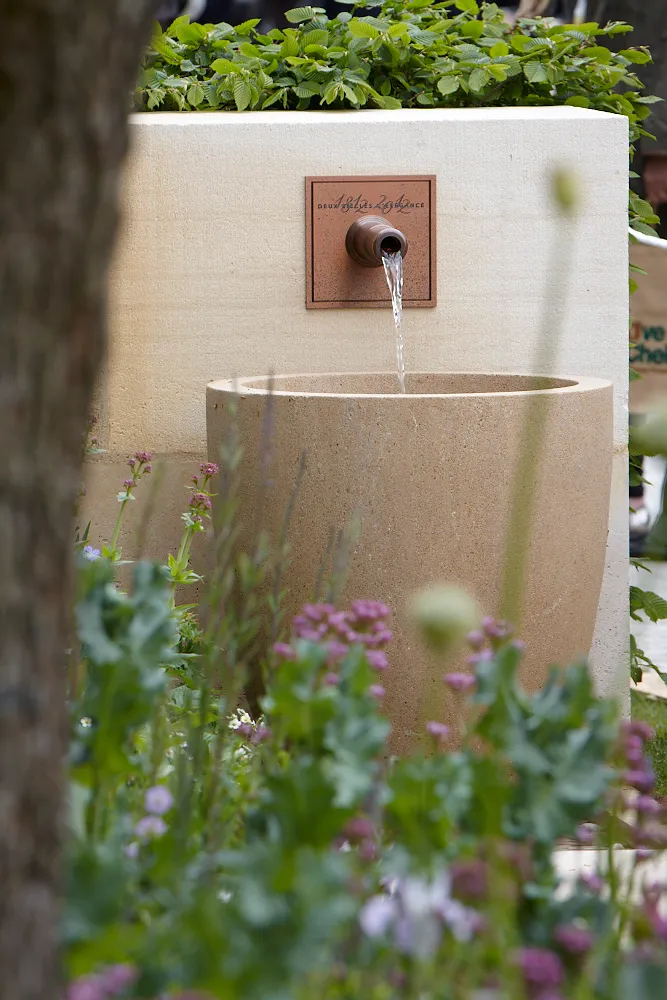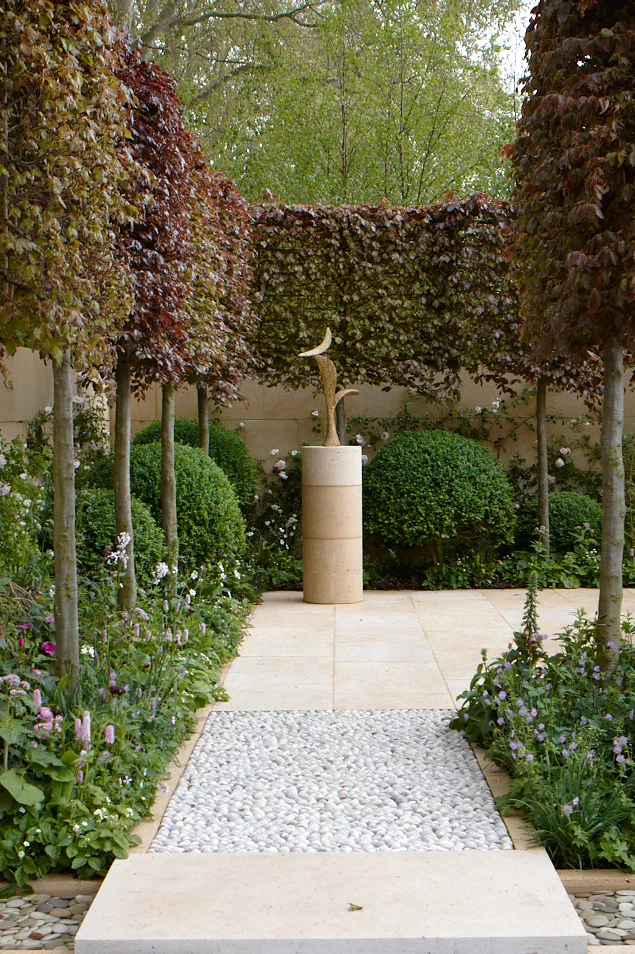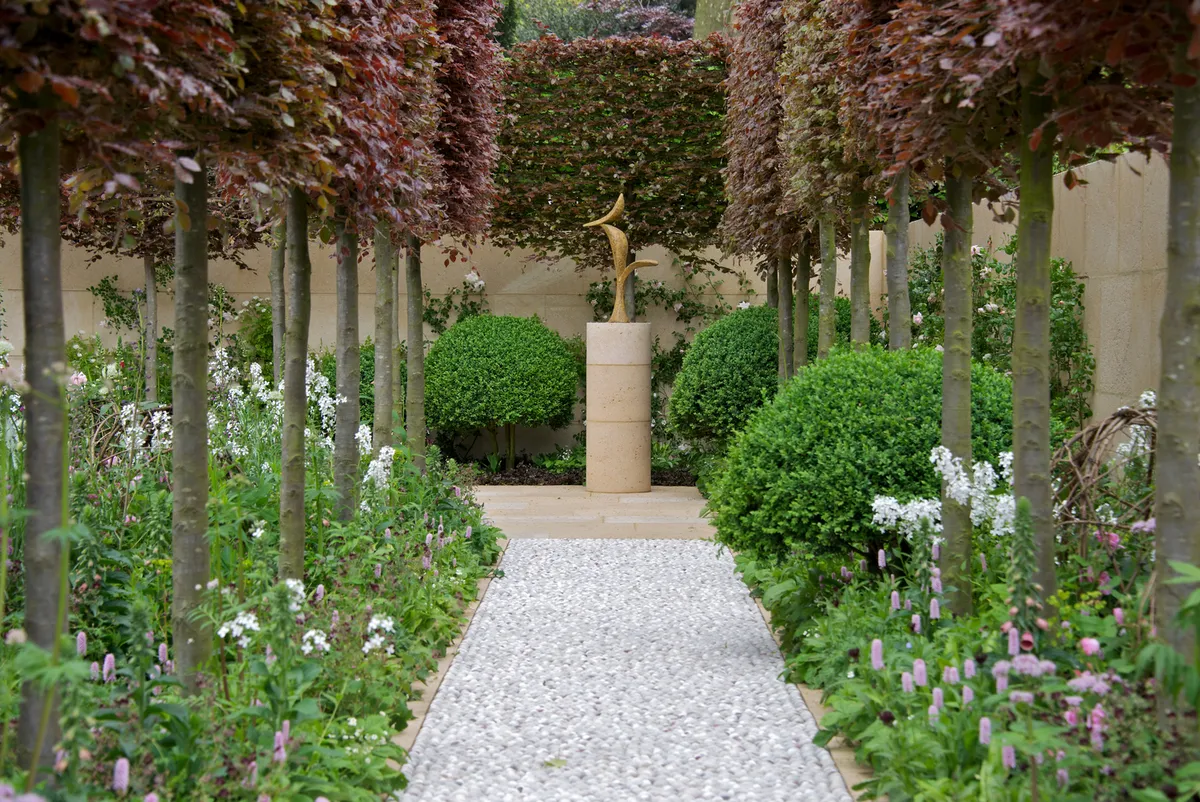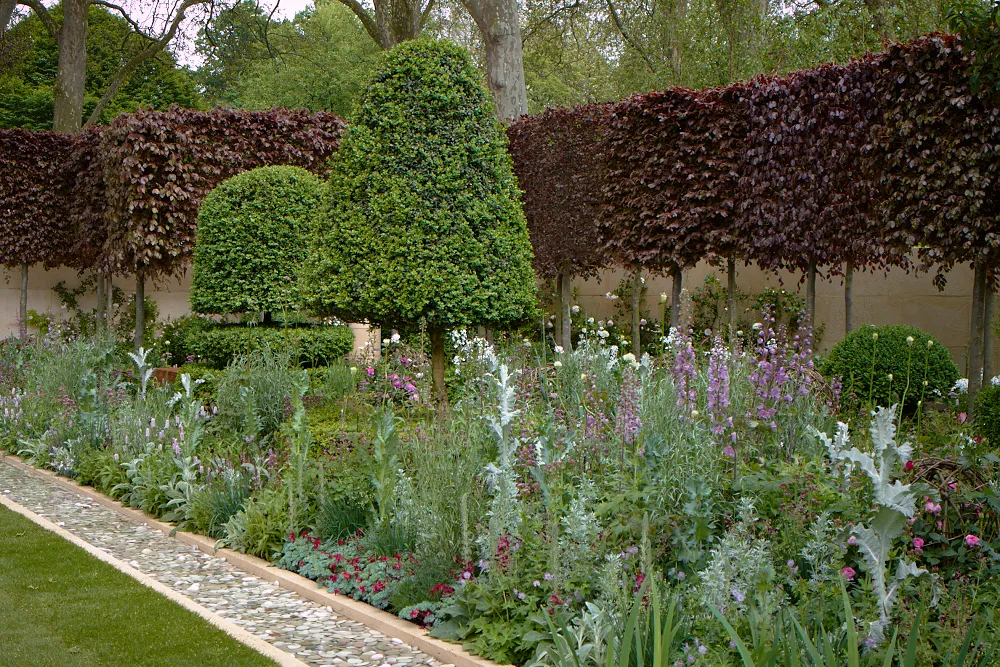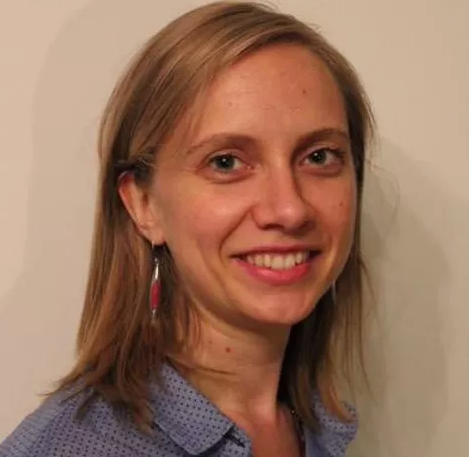Designer Arne Maynard has a wealth of experience designing gardens around the world, including two Show Gardens at RHS Chelsea Flower Show. His Allt-y-Bela house in Wales is filled with his trademark topiary, wildflowers, roses and more and a recent example of his work is this small urban garden in north London using Corten steel and bulbs. His two Chelsea Show Gardens were the Gardens Illustrated garden in 2000 with Piet Oudolf, and a garden for Laurent-Perrier in 2012. Here he explains a little more about each of them.
How did the Gardens Illustrated Chelsea Show Garden come about?
At the time, Rosie Atkins was editor at Gardens Illustrated and she thought the idea of a collaboration between Piet Oudolf and I would be really lovely. Rosie always managed to bring people together in a really nice way.
It seems to have had a lasting legacy, what was your feeling about the final garden?
There was a lot of buzz around Chelsea in the year 2000 because of the millennium and it was the year they changed from the lovely old canvas marquee. There was a lot of moving forward. Up until that point a lot of Chelsea gardens were like flower arrangements. I remember once when Arabella Lennox-Boyd did a very lovely romantic formal garden with a yew hedge, but the hedge was chicken wire around a frame with hundreds of yew branches pushed into it. I really wanted to create a cloud hedge for our garden that year and so we grew it for two and a half years ahead of the Chelsea. It was really the first year that Chelsea had live hedges to that standard. I think we were quite revolutionary in having a real hedge.
How would you describe the garden?
We thought it would be nice to combine the modernity of where we were with gardens and the modernity of Piet's planting, with a sense of a cottage garden. I think it was one of the gardens that changed the way gardens were viewed at Chelsea. And we did it on a very small budget. I think the full cost of the garden was about £45,000, which was small compared to the other gardens that were being built at that time, many of which were spending around £200,000.
Was having less money liberating? Or stressful?
It wasn't stressful. You can sometimes gain a lot by saving money and cutting things back, as long as the materiality is right. Gardens cost money, but can create a very beautiful garden with not a lot of money. I actually think there should be set categories at Chelsea for gardens costing over a certain amount and under a certain amount. For the Gardens Illustrated garden we used a foundry that had leftovers from stuff made by Anish Kapoor, and we recycled things. We kept it all really simple.
And the planting: how was it working with Piet?
It was great doing it and great working with Piet. We had a lovely time going through Piet’s nursery. I think it was one of the first gardens that didn't have anything forced within the garden, it all had to be grown naturally. Both Piet and I were very adamant about that. We wanted to have what people have in their gardens in flower at that time of the year without it being forced. We wanted our garden to be very true.
Did it change your career?
I think it did change both my career and Piet's, but doing a Chelsea garden doesn't suddenly make you really busy. It just means you’re a bit more established. They are milestones. People still remember that garden, often we get new clients who say: 'The first time I saw your work was at Chelsea Flower Show and it made a big impression on you and I’ve been following you ever since.'
And there was a good response to the garden?
I believe it was the first garden that won Best of Show for a newcomer. Neither Piet nor I had ever done Chelsea at that point, and before you'd usually had to have proved yourself with silver or gold. How they judged things back then was quite different.
And the Laurent-Perrier Bicentenary Garden in 2012 did they give you a lifetime supply of champagne?
No! I do think it’s terribly sad that they aren’t one of the sponsors at Chelsea anymore. I think Chelsea has really changed with regards to sponsors. Sponsors don't seem to be able to evaluate the value of spending the money. There’s no direct correlation between what they spend and what they gain with Chelsea, it’s much more subliminal. Before it didn’t really matter, it would be part of the social calendar, but now people number crunch. It does make me question whether I would do another Chelsea.
How do you feel about that garden now you look back at it?
I am really proud of it, but I do also look back at it and go: 'Oh my god, did I really do that?' I think that’s the same with any garden, whether it’s a Chelsea garden, or my own old garden. You tend to look back and it feels so old fashioned. Gardens are about evolution and moving on, and you can’t hold them still. But I was happy with the garden, I wanted it to be felt like it was a gardener’s garden, that could be gardened, I wanted it to be soft and romantic.
Had you worked on the concept for a long time?
I decided I wanted to do a garden at Chelsea about six years before it appeared, then approached Laurent-Perrier. Each year I would go back to Chelsea and just look at what was there. It's extraordinary the phases gardens go through. There was a phase where gardens didn't really have flowers in them, they were just green and architecture. Beautiful structures but they weren't really gardens. I kept thinking: but where are the roses? We're in England and there are no roses at Chelsea. I think the 2012 garden was one which brought back roses to the Chelsea garden. It was full of roses people could smell on the air.
Head to our Chelsea Flower Show hub page for all our Chelsea coverage



